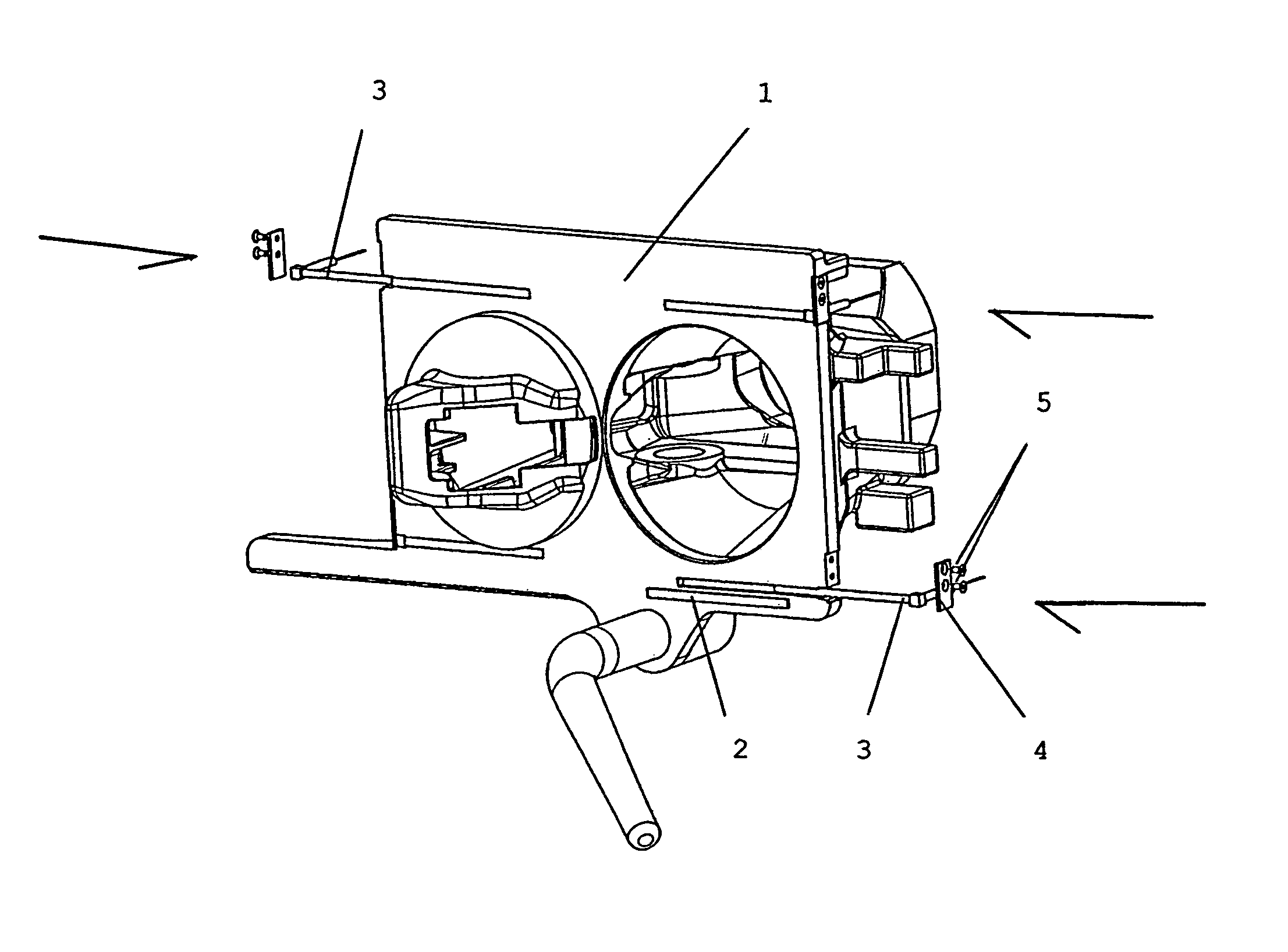Electric heater for the coupling head of a central buffer coupling
a technology of electric heater and central buffer, which is applied in the direction of heater elements, railway couplings, heating element shapes, etc., can solve the problems of local overheating, unsuitable use of soft solders with low melting points, and damage to the heating element, so as to facilitate the simple placement of the heating element, facilitate heat conduction, and use the effect of positioning
- Summary
- Abstract
- Description
- Claims
- Application Information
AI Technical Summary
Benefits of technology
Problems solved by technology
Method used
Image
Examples
Embodiment Construction
[0017]The invention is described in greater detail below based on an embodiment in reference to the drawing, in which FIGURE shows a perspective view of an electric heater for a central buffer coupling with heating elements that are installed and intended for installation.
[0018]Recesses in the form of channels are disposed in the faceplate of coupling head 1 of a central buffer coupling shown in FIGURE. The channels made in the faceplate in different orientations and at different distance dimensions are coverable or covered toward the front in the plane of the faceplate closure by face sheets 2. Face sheets 2 are placed in appropriate indentations and connected to the faceplate, preferably by hard soldering. The resulting recess / channels are intended to receive heating elements 3 and are precisely matched to each other with regard to their diameter dimension Each heating element 3 is fastenable after installation through a holding sheet 4 on coupling head 1 by means of removable fas...
PUM
 Login to View More
Login to View More Abstract
Description
Claims
Application Information
 Login to View More
Login to View More - R&D
- Intellectual Property
- Life Sciences
- Materials
- Tech Scout
- Unparalleled Data Quality
- Higher Quality Content
- 60% Fewer Hallucinations
Browse by: Latest US Patents, China's latest patents, Technical Efficacy Thesaurus, Application Domain, Technology Topic, Popular Technical Reports.
© 2025 PatSnap. All rights reserved.Legal|Privacy policy|Modern Slavery Act Transparency Statement|Sitemap|About US| Contact US: help@patsnap.com


